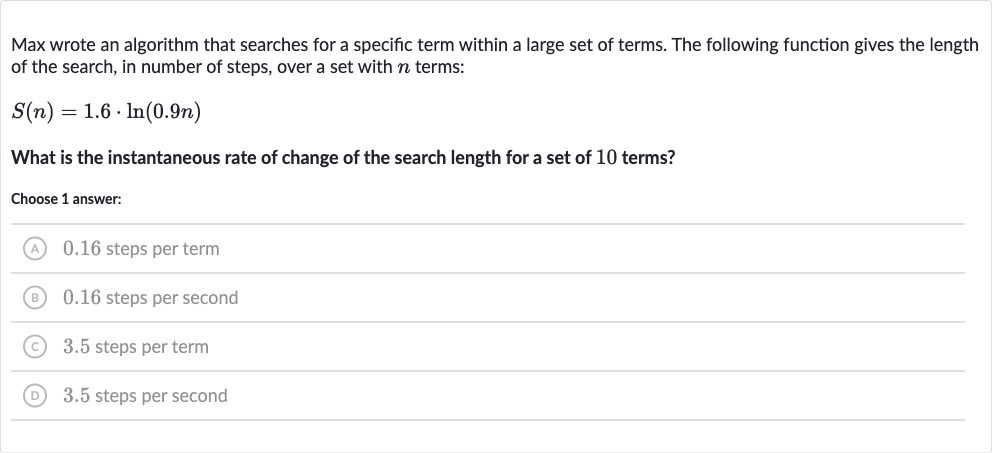AI tutor
Welcome to Bytelearn!
Let’s check out your problem:

Max wrote an algorithm that searches for a specific term within a large set of terms. The following function gives the length of the search, in number of steps, over a set with terms:What is the instantaneous rate of change of the search length for a set of terms?Choose answer:(A) . steps per term(B) . steps per second(C) . steps per term(D) . steps per second
Full solution
Q. Max wrote an algorithm that searches for a specific term within a large set of terms. The following function gives the length of the search, in number of steps, over a set with terms:What is the instantaneous rate of change of the search length for a set of terms?Choose answer:(A) . steps per term(B) . steps per second(C) . steps per term(D) . steps per second
- Differentiate : To find the instantaneous rate of change, we need to differentiate the function with respect to .Let's find , the derivative of .
- Apply Chain Rule: Using the chain rule, the derivative of is times the derivative of , which is . So,
- Simplify : Simplify the expression to find .
- Evaluate at : Cancel out the in the numerator and denominator.
- Calculate : Now we need to evaluate at to find the instantaneous rate of change when there are terms.
- Final Result: Calculate the value of .
- Final Result: Calculate the value of . This is the instantaneous rate of change of the search length when there are terms.
More problems from Volume of cubes and rectangular prisms: word problems
QuestionGet tutor help
QuestionGet tutor help
QuestionGet tutor help
QuestionGet tutor help
QuestionGet tutor help
QuestionGet tutor help
QuestionGet tutor help
QuestionGet tutor help
QuestionGet tutor help
QuestionGet tutor help
